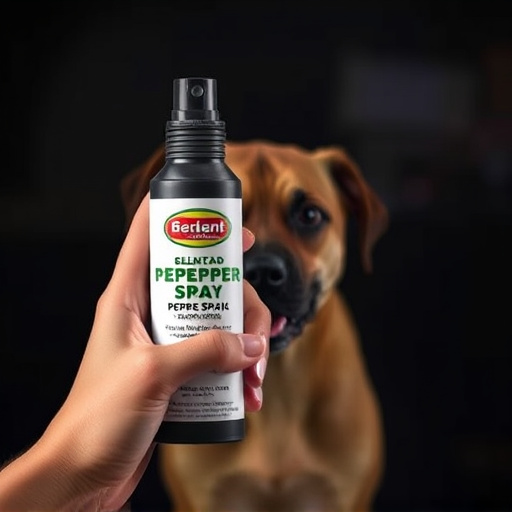Understanding canine behavior is key to successful dog training, especially when using UV dye in mace spray as a deterrent. Dogs react uniquely to stimuli driven by instincts. Effective training employs positive reinforcement and redirects undesirable behaviors. The goal is to associate triggers with safety, leading to calmer responses. Integrating UV dye into mace spray enhances training effectiveness, allowing precise tracking of dog progress. Using proper Mace Spray Dog Training Techniques prioritizes safety and humanity, ensuring effective and humane training through positive behavior reinforcement.
Discover the power of a innovative dog deterrent: mace infused with UV dye. This article explores effective training methods, leveraging our understanding of canine behavior. We delve into the science behind UV dye as a non-lethal deterrent and provide safe, humane application techniques for responsible dog training. Learn about proper mace spray dog training techniques to create a positive and secure environment for both you and your furry companion.
- Understanding Dog Behavior for Effective Training
- The Role of UV Dye in Dog Deterrent Mace
- Safe and Humane Application Techniques for Dog Training
Understanding Dog Behavior for Effective Training
Understanding a dog’s behavior is key to successful training, especially when employing deterrents like UV dye in mace spray. Dogs react to various stimuli differently, and their actions are often driven by instincts. For instance, dogs have a natural flight response when faced with unfamiliar or threatening situations, which makes them sensitive to sudden movements and strong scents.
Effective training involves positive reinforcement techniques, where desired behaviors are encouraged while undesirable ones are redirected. The right approach teaches dogs to associate certain triggers, like the scent of UV dye in mace spray, with their safety and well-being, eventually leading to a calmer response and better control for owners. Combining this understanding with proper Mace spray dog training techniques can result in effective deterrent use and improved canine behavior.
The Role of UV Dye in Dog Deterrent Mace
The inclusion of UV dye in dog deterrent mace is a game-changer in pet safety and training. This innovative feature plays a pivotal role in enhancing the effectiveness of mace spray when used as a last resort during dog training. UV dye, invisible to the naked eye but detectable under ultraviolet light, allows for precise and targeted training sessions. By marking specific areas or objects that dogs should avoid, trainers can reinforce positive behavior using proper mace spray dog training techniques.
This technology ensures that dogs learn to associate certain spaces or items with a temporary discomfort, encouraging them to make different choices. The dye’s ability to reveal these marked areas helps owners track their dog’s progress and adjust training strategies accordingly. With UV dye, dog trainers can effectively communicate the boundaries and rules, making it an indispensable tool for teaching commands like “stay” or “no.”
Safe and Humane Application Techniques for Dog Training
When employing mace as a dog deterrent, it’s paramount to prioritize safety and humanity in application techniques for effective dog training. Start by ensuring the mace spray is specifically designed for animal deterrence, with non-irritating components to prevent long-term harm. Always use the product outdoors or in well-ventilated areas to minimize risk of inhalation.
Proper handling includes holding the canister at arm’s length and aiming away from the dog’s face. A light misting is preferable to a direct blast, targeting the dog’s legs and hindquarters where it will be most effective without causing distress. Gradually increase the intensity as needed, rewarding desired behaviors with treats or verbal praise to reinforce positive training outcomes.
When used correctly, mace dog deterrent with UV dye can be an effective tool in proper mace spray dog training techniques. By understanding canine behavior and employing safe, humane application methods, owners can train their pets without causing harm or distress. The UV dye acts as a visible reminder of the deterrant’s presence, helping to reinforce positive behavioral changes over time. Remember, consistent and compassionate training methods are key to achieving successful outcomes in any dog training endeavor.
